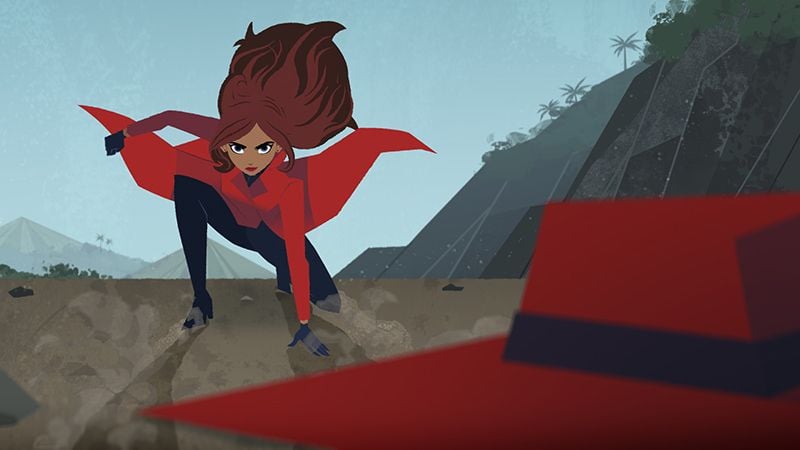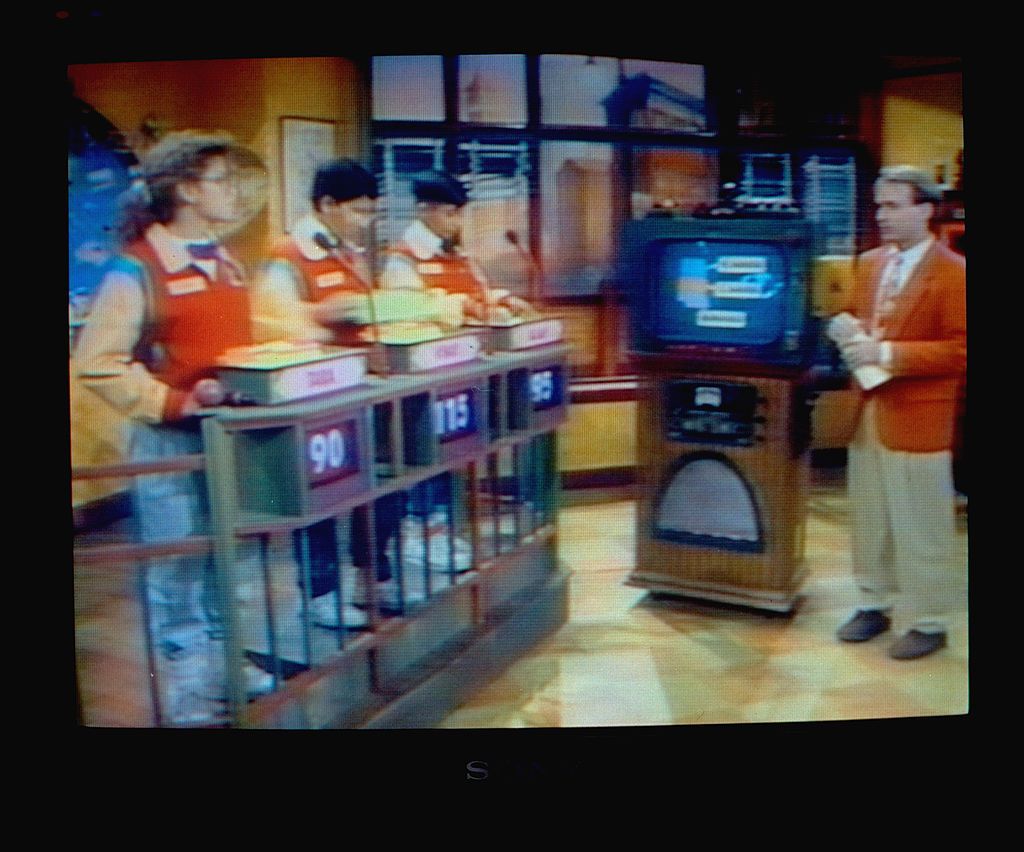How a Generation Became Obsessed With Tracking Down Carmen Sandiego
The globe-trotting thief of the popular 1985 computer game is back at it in a second season of an animated Netflix series
/https://tf-cmsv2-smithsonianmag-media.s3.amazonaws.com/filer/58/37/58372beb-5c6f-4a5e-b52e-acd22ab1853d/carmen-sandiego-netflix.jpg)
Back in 1983, programmer Dane Bigham began working on a project that would eventually become the hugely popular computer game Where in the World Is Carmen Sandiego? There was no Carmen, no educational component, and no world traveling, but he was already messing around with the concepts of a graphics-based game aimed at kids. Bigham's team at Brøderbund settled on a cops-and-robbers theme. Most adventure games at the time plopped the player into a dungeon to wander around, aimlessly unlocking doors and fighting monsters. Giving the player a clear objective—track down this thief, track down that thief—was one way to separate the game from the masses.
Bigham's boss at Brøderbund, Gary Carlston, came up with the idea to include with the game a hard copy of The World Almanac and Book of Facts. “Nothing like that had ever really been done,” says Bigham, who calls it a key difference between Carmen and every other game on the market at the time. Carlston had been fascinated by the almanac as a kid and wanted some way of incorporating it into the game. It was at that point, Bigham says, that the game began to take on Carmen's international, globe-hopping flavor.
“Once we decided Carmen was somewhat educational, we just wanted to stay as far away from that word as we could, because educational games at the time sucked,” laughs Bigham.
The release of Carmen in 1985 began a 34-year franchise that created 17 follow-up games on various platforms, seven board games, seven book and comic book series, and four television series, including Netflix's animated series, Carmen Sandiego, which released its second season this month.
Adventure games of the early 1980s were mostly text-based. Everything that happened was described to you in lines of monochromatic text, and it was up to the player to imagine the world described. It was like an electronic Choose Your Own Adventure book. Gameplay, too, was all text-based, where a common gameplay element was to be given a word, and you had to guess the proper synonym to proceed. You had to be quick with a thesaurus, or you had to know a lot.
“They weren't really accessible to kids,” Bigham says. “The idea (with Carmen) at the time seemed new. Make these games, which were kind of hard to play, better for kids.” Instead of relying only on lines of text, Carmen had colorful visuals that accompanied the on-screen text. Carmen wasn't the first graphics-based game, but it was among the first.
Carmen Sandiego was the game's main antagonist, the leader of an international group of thieves called the Villain's International League of Evil (V.I.L.E). Carmen's henchmen would steal things like landmarks and famous works of art, and the player, a member of the international police force Interpol and the protagonist, would reference the book's vast amount of information on landmarks, cities, countries, and so on to solve clues that'd nudge them ever closer to Carmen. “She told me she’s going fly fishing on Kenai Peninsula,” for instance, would direct a player to Anchorage.
As the player progressed, they would lock up Carmen’s henchmen one by one, but she always had a knack for staying one step ahead of the player. Her cunning made her an anti-hero to young girls and Latino people. Pretty much all video game characters in the history of video games had been white guys.
Carlston hired writer David Siefkin to develop a narrative for the story, and it was he who created Carmen. First, she was one of many small-time thieves, but during the game's development she became the mastermind behind them all. She was portrayed over the years as a thief with a conscience who stole for the challenge of pulling off a great heist (or in the case of the Netflix series, a Robin Hood-like character who steals from other thieves), and she never hurt anyone. The player, a nameless detective, was the protagonist but Carmen stole the limelight. She was the star of every scene she was in, even though she was also the source of all the player's repeated frustrations.
Popular lore paints Bigham as dissatisfied at having creative control ripped away from him and an educational component tacked onto his project, but he says he doesn't feel that way. “I felt like I had plenty of creative control and plenty of creative support,” he says, although he admits he was skeptical of Carlston's idea. “To be honest, when the book was first put on my desk, I was like 'Ugh! A book! I don't want a book. That's boring.' But I came to appreciate it as a great framework for the cops-and-robbers side of it.”

Bigham noticed that older players preferred to guess at clues, but younger players who had less existing knowledge packed into their minds preferred to look things up in the Almanac. Carlston's idea to include the book as a reference helped make the game what Bigham had wanted it to be from the start—accessible to younger players.
At the time, video games would either launch to critical acclaim and big sales or they'd quickly be considered flops. Carmen didn't gain much attention until about a year after it came out, mostly through word-of-mouth among people working in education. All of a sudden, it's all anyone could talk about, and sales took off in 1986. Brøderbund sold it to schools, when computer labs were just beginning, with certificates for home purchase. Bigham, like everybody, was surprised. “I didn't think it would be that big of a deal,” he says.
When asked why Carmen became such a hit, he says that anybody's guess is as good as his, but his hunch is that it's because you play Carmen like a party game, like the board game Trivial Pursuit. Every clue or case left by a V.I.L.E. henchmen called on the player to take their best guess—and people love being right—or it exposed a gap in their knowledge that they couldn't resist filling. The game egged the player on from first scene to last.
“A lot of people thought that, because you were taking somebody around the world, it was a geography game, and everybody still calls it that. It's kind of funny,” says Bigham. “But it really wasn't a geography game that taught a ton about geography… What I always thought it taught was reference skills. 'How to look something up' sounds kind of boring and simple, but I think it's a great skill to realize. Now, you just ask Google, but back then you had to figure out a way to answer your questions.”
“It was educational, but not ‘drill and kill,’ which was the style at the time, and it had a sense of humor,” says Lauren Elliott, an original designer of the Carmen Sandiego game series. “It was always an edutainment game. We never called it edutainment—that came later. It was just fun, and happened to have content in it.”

Where in the World Is Carmen Sandiego? led to Where in the U.S.A. Is Carmen Sandiego? and Where in Europe Is Carmen Sandiego?, along with stranger follow-ups, such as Where in Time is Carmen Sandiego? and Where in North Dakota Is Carmen Sandiego? I’m not kidding about that last one. And then the initial children's live-action television series, named after the first game, that ran 296 episodes on PBS over the course of five seasons from 1991 to 1995.
Bigham didn't stick around Brøderbund to work on the sequels. “It wasn't immediately evident that there was more to do,” he says. “It wasn't like somebody said, 'Ok, why don't you take a couple of weeks off and we'll do the next Carmen?' I just moved on.”
Carmen wasn't meant to be a franchise, and its slow start in 1985 meant that by the time it became successful in 1986, Bigham was working for another company. Many of the people who'd created the first game, like Bigham and Siefkin, had gone on to new jobs or projects by the time Brøderbund decided it would be foolish not to make more Carmen games.
“Most publishers in the late ‘80s and early ‘90s got more and more cautious, only republishing the hits and not taking chances on new titles,” says Elliott. “Brøderbund did the same. The beginning Carmen group was only Gene [Portwood], myself, and the programmer Dane [Bigham], supported by Gary and Doug [Carlston]. By the time we had finished the fifth or sixth [Carmen], Brøderbund was 200-plus [employees], and the Carmen team was easily 30 to 40, which meant that the company, like many others, needed to go with known successes.”
Franchises tend to become stale or stray from their roots, but the Carmen games kept the original's template fresh by jumping to new countries, continents and time periods. When you set the entire world as your playground, there's a limitless amount of cultural treasures to experience. And, if you're V.I.L.E., steal.

